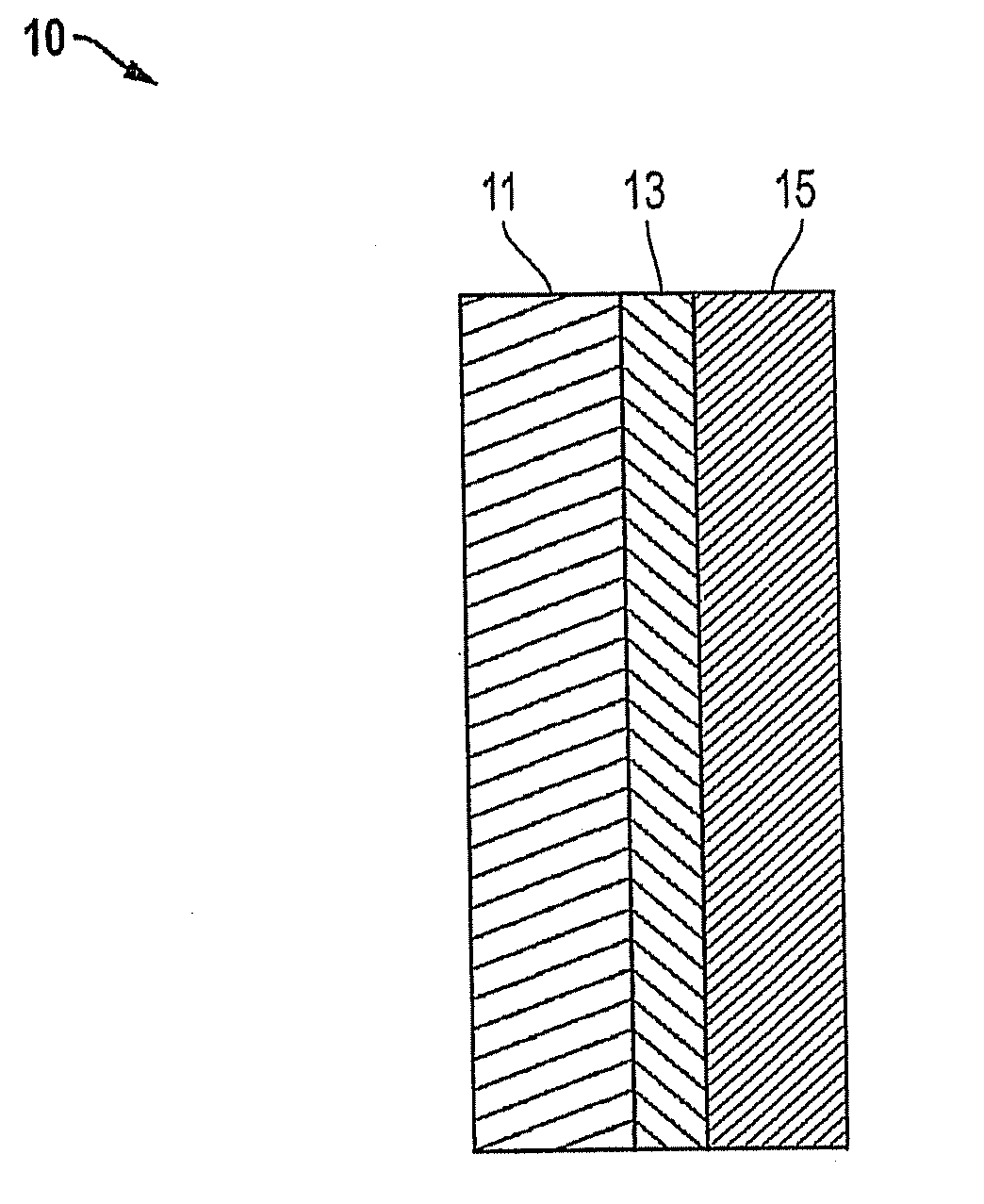System, method, and apparatus for forming ballistic armor from ceramic and shape memory metallic alloy materials
a technology of metallic alloy materials and system methods, applied in the field of multi-layered armor materials, can solve the problems of complex and difficult to understand, weak tension, and strong compression of ceramic materials, and achieve the effects of reducing the complexity of the process, improving the performance, and improving the quality of the produ
- Summary
- Abstract
- Description
- Claims
- Application Information
AI Technical Summary
Benefits of technology
Problems solved by technology
Method used
Image
Examples
Embodiment Construction
[0014]Referring to FIGS. 1 and 2, embodiments of a system, method, and apparatus for a ballistic armor system are shown. As shown in FIG. 1, the ballistic armor system 10 may comprise a shape memory alloy 11, an interface material 13 mounted to the shape memory alloy 11, and a ceramic plate (e.g., an armor strike plate) 15 mounted to the interface material 13 opposite the shape memory alloy 11. The shape memory alloy may be joined to one or both faces of the ceramic plate via this technique. In order to improve its performance, the ceramic armor strike plate 15 is in residual compression at an interface with the interface material 13.
[0015]In one embodiment, the shape memory alloy 11 comprises nitinol (i.e., Nickel Titanium Naval Ordnance Laboratories), and the ceramic armor strike plate is in up to approximately 8% residual compression. Other shape memory alloys also may be used. The interface material 13 may be solid state bonded to the shape memory alloy 11 via, e.g., explosive b...
PUM
| Property | Measurement | Unit |
|---|---|---|
| temperature | aaaaa | aaaaa |
| plastic tensile strain | aaaaa | aaaaa |
| temperature | aaaaa | aaaaa |
Abstract
Description
Claims
Application Information
 Login to View More
Login to View More - R&D
- Intellectual Property
- Life Sciences
- Materials
- Tech Scout
- Unparalleled Data Quality
- Higher Quality Content
- 60% Fewer Hallucinations
Browse by: Latest US Patents, China's latest patents, Technical Efficacy Thesaurus, Application Domain, Technology Topic, Popular Technical Reports.
© 2025 PatSnap. All rights reserved.Legal|Privacy policy|Modern Slavery Act Transparency Statement|Sitemap|About US| Contact US: help@patsnap.com



